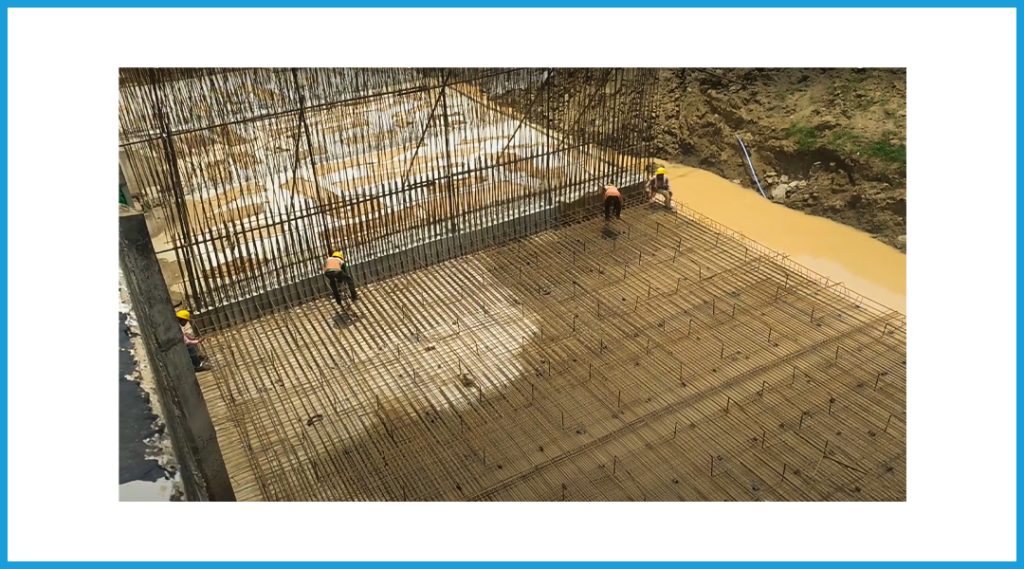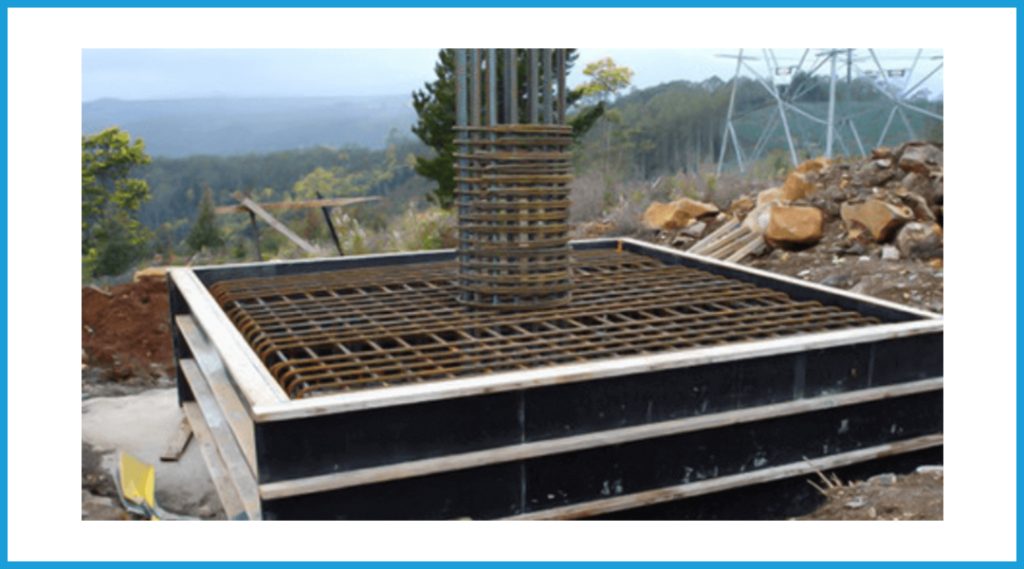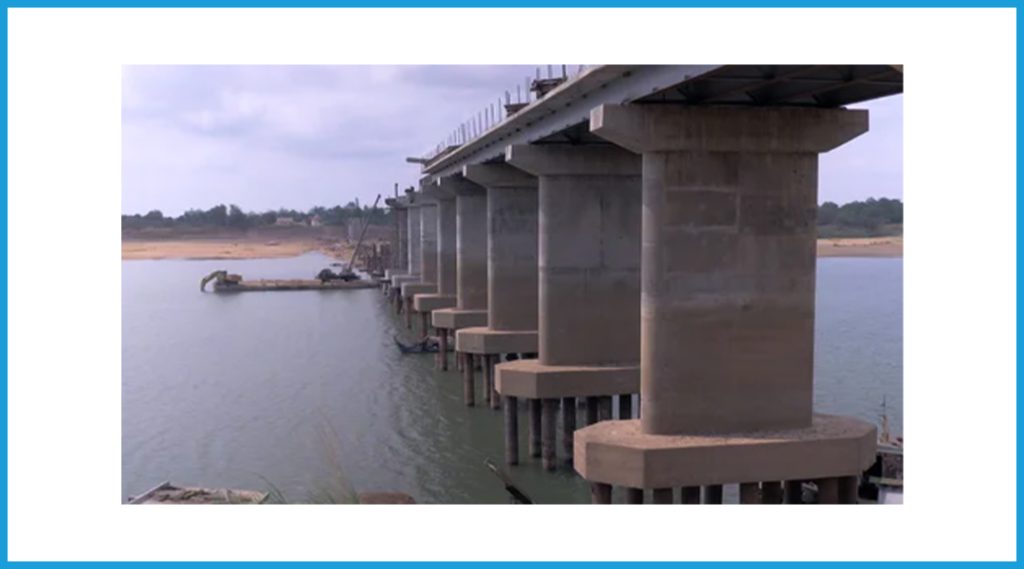
Types of Bridge Foundation
A good foundation is vital for any structure, but for bridges where dynamic loads and water depth could play major roles, the foundation demands extra attention. There can be many types of bridge foundations, depending on various factors. Learn about them and more as you read through this blog.
Bridge foundation construction employs the most critical design aspects for a given bridge project since it will support the dynamic traffic load on the bridge in addition to the overall weight of the bridge itself.
So transmitting all loads from the abutments, piers, and wings into the supporting strata for dispersion over a vast bearing region can be summed up as the primary function of the bridge foundation.
Furthermore, the stability of a bridge against settlement and shifting is guaranteed by its foundation. For the entire bridge structure to be stable and structurally sound, the type of bridge foundation used must be chosen carefully.
The site conditions and the bridge superstructure will determine which type of bridge foundation is best. The geologic features and soil characteristics of the site where the bridge will be built are referred to as site conditions.
In order to avoid scours brought on by river flow, the bridge foundation needs to be deep enough. Furthermore, the loads that the foundation transfers to the subordinate soil must not cause soil shear failure or negatively impact the superstructure of the bridge’s settling.
Different types of bridge foundations
There can be 7 different types of bridge foundations, as listed below, based on multiple criteria such as soil type, load factors, depth of water, river flow, etc.
- Spread or open a foundation.
- Raft foundation.
- Grillage foundation.
- Inverted arch foundation.
- Pile foundation.
- Well foundation
- Caisson foundation.
Spread or open foundation:

This is a medium-height bridge foundation that can be constructed on dry ground that is firm enough to hold the bridge structure. This type of foundation is most suitable when hard soil is within 1.5-3 m from the bed of the watercourse and when scouring is minimal.
Raft foundations:

This type of bridge foundation is suitable for use on bridges when the watercourse bed is composed of soft clay or silt and there is no hard soil available below 1.5-2.5 m.
Raft foundations are best used when there is a low allowable bearing capacity in the soil or when the load on the bridge is heavy. A raft foundation can also be used when there are soft pockets in the soil bed that can be compressed and there is a possibility of uneven settlement.
Grillage foundations:

This type of foundation is best suited for heavy, isolated footings on piers, where deep foundations should be avoided. This type of foundation is also best suited for poor subsoil conditions.
Inverted Arch Foundations

Inverted arch foundations are best suited when the depth for foundation excavation is less. They are also best suited for areas where the soil bearing capacity is low, particularly where there are soft pockets in the subsoil and there is a risk of uneven settlement.
Pile Foundation

This kind of bridge foundation works well in situations when the hard strata are not accessible at an appropriate depth below the river’s bed level and the soil is extremely soft. It works well in situations when significant river bed scouring and heavy, concentrated loads are anticipated to be carried by the foundation. It is also appropriate in situations where providing a raft or grillage foundation would be highly costly.
Well foundation

This type of bridge foundation works best where there is good soil about 3-4 m below the river bed level and the river bed is composed of sandy soil. This type of foundation works best in soft soils or on sandy beds where heavy scouring can occur due to the high velocity of the approaching water.
Caisson foundation
Caisson foundations work best when there is a hard stratum near the river bed, but the depth of the water is too high, and it is not economical to exclude water from the dry bed to sink the wells to provide a well foundation.
How bridge foundations are laid in waterways
Many factors can affect how workers build a bridge over water. The water depth is the most important determining element for bridge construction methods. There are simpler and faster methods for building on shallow water. Deep seas necessitate complex and time-consuming techniques.
Following are the various standard procedures used to build a bridge foundation in waterways:
Cofferdam
The cofferdam technique is one of the most prevalent methods for building bridges over shallow as well as deep water. Engineers build a watertight wall around the workplace into the water. The wall prevents outside water from coming inside while the inside water is pumped out. Once the water has been drained, there will be a dry place to lay the bridge’s foundation.
During deep sea construction, cofferdams are made of interconnecting sheet piles and steel plates to form a waterproof chamber. After construction, they are demolished and removed.
Battered poles
Battered pole methods are commonly used for building small bridges in shallow waters. Large foundational poles composed of concrete and steel are known as “battered poles,” To support a lateral load, piles are driven underwater at an inward or outward angle using pile drivers, similar to driving a nail with a hammer.
Batter piles are very effective at withstanding winds, waves, and other pressures. Pile caps are built over them, enabling them to sustain the weights required for the construction of upper bridges.
Caissons
A caisson is a ready-made foundation, which is simply a hollow box or cylinder, often made of concrete, that is prefabricated and dropped into the water at the right location. Caissons can be built off-site and brought in by barge, if needed for some kinds of constructions.
Due to its higher affordability, safety, and ease of usage, this method of foundation is frequently used in the construction of overwater bridges and other overwater structures.
For workers, the caisson is far safer than other techniques. This foundation is being built on a floating dock that functions as a sort of floating factory, thus better and more easily implementable safety precautions are in place.
Drill Shafts
The Drill shaft method enables excavation of holes, steel reinforcement installation, and concrete filling without the need for dewatering. This helps build an incredibly strong foundation structure using specialised equipment and construction procedures.
In this intricate method, a watertight chamber is used, and a sealed tube is inserted into the chamber. The engineers insert a long drill into the tube to start the drilling process. Once the drilling is complete, the frame can be constructed.
Hope, this overview of bridge foundation construction has satisfied your quest. Please do write to us at [email protected] for more/specific information on bridge construction.
